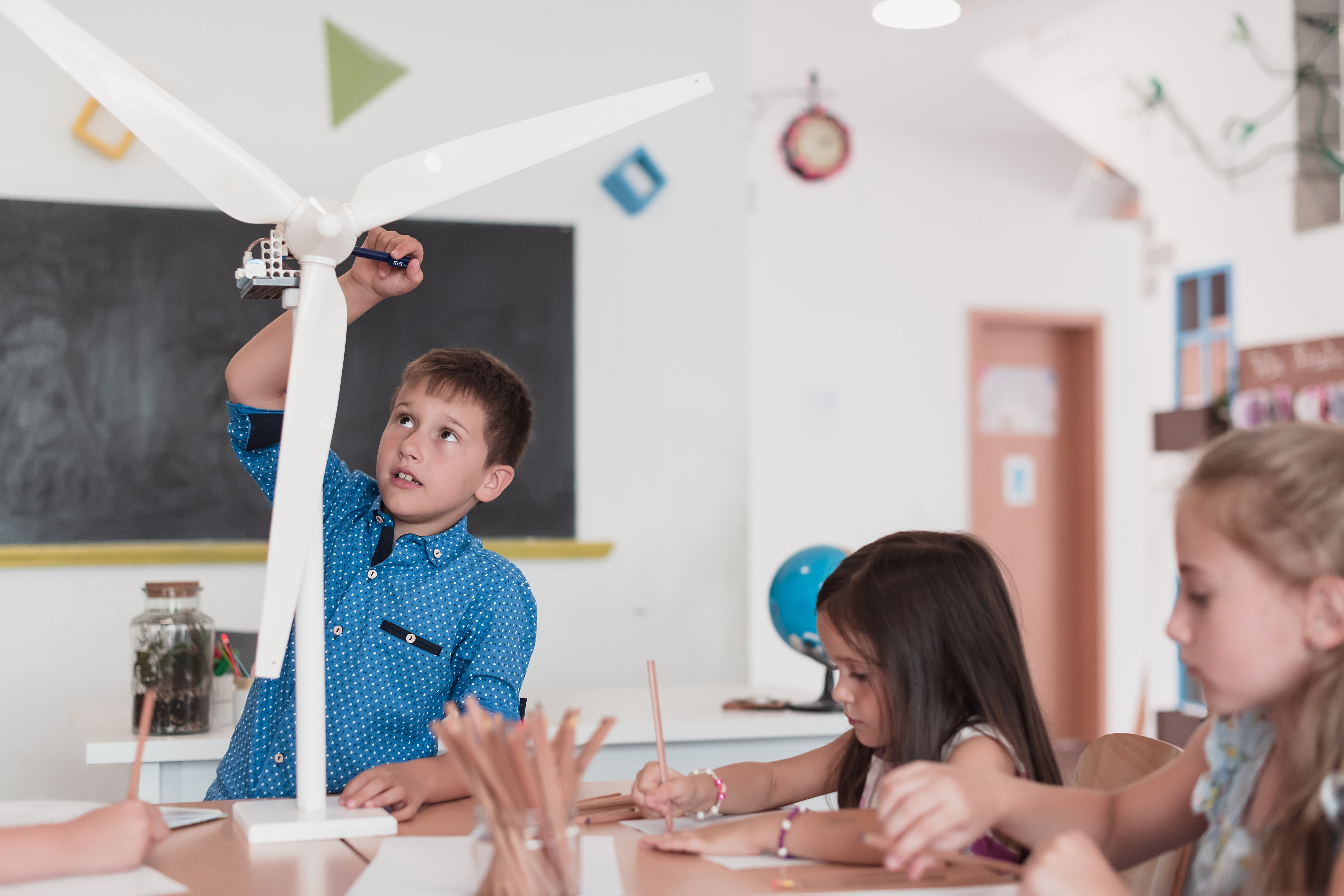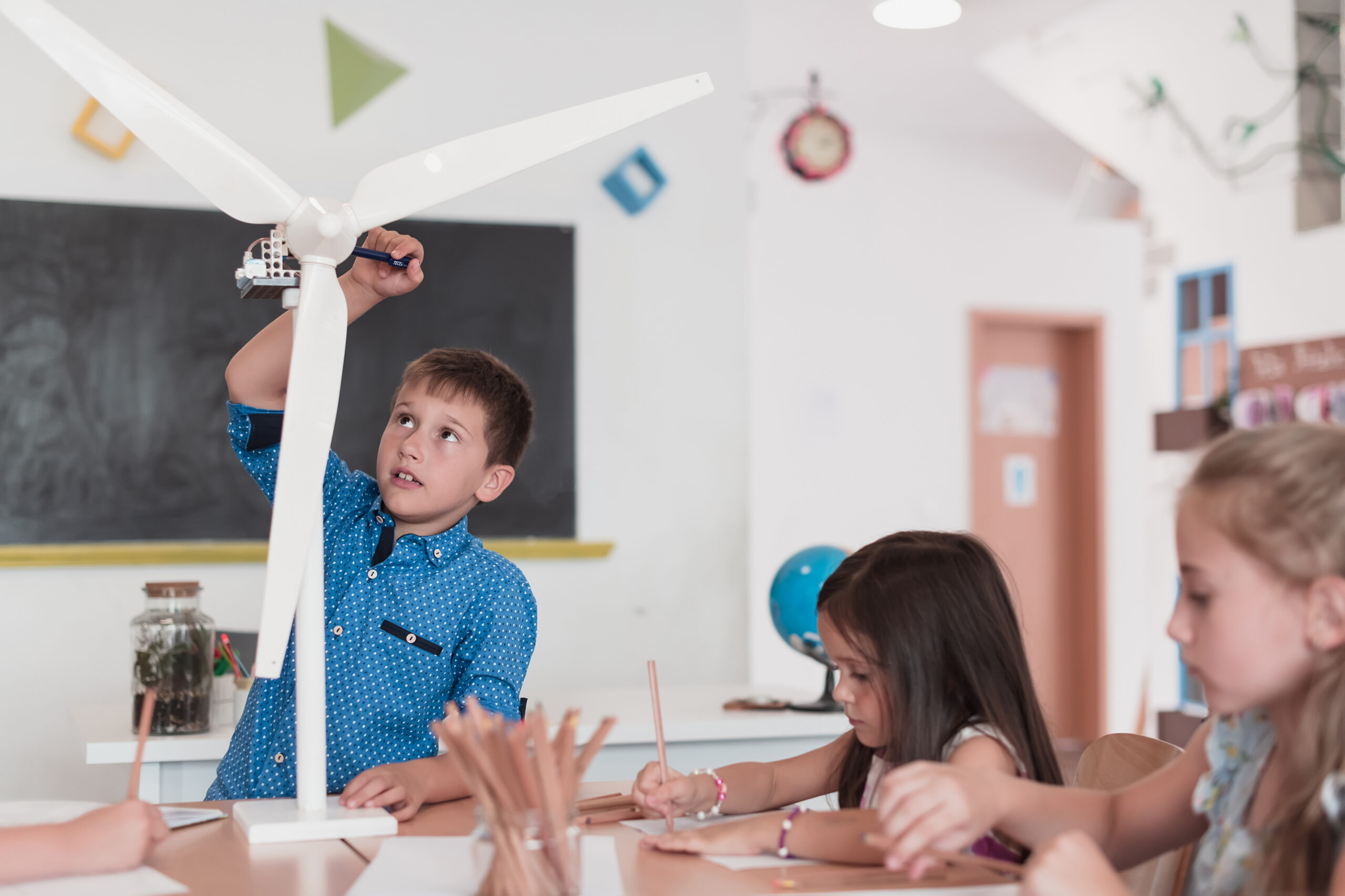
Every teacher knows that STEM-based learning is the wave of the future. Most also know that STEM is incomplete without art and literature. Project-based learning is an ideal way to master STEAM skills in a way that feels relevant to students. Projects help students master useful skills, keep learning fun, and allow students to direct the course of their own education. That’s a win for everyone. It’s also a way to produce higher test scores without teaching to the test.
The following activities can engage even bored and frustrated students in STEAM:
PBL STEAM Activities for Toddlers and Preschoolers
A few tweaks to the following activities can make them more or less challenging, depending on student competencies, curriculum goals, and similar factors. Help your early learners master STEM with these projects:
Build a cardboard tree or buy one at the local craft store. Any cardboard shape will work, so you can try a ball, flower, or any other shape if students prefer not to use a tree. Mix the crystal solution together: four tablespoons of warm water, four tablespoons table salt, two tablespoons ammonia, and four tablespoons of Mrs. Stewart’s bluing solution. Paint the cardboard with food coloring, then apply the crystal solution. The crystals will appear after several hours and continue to develop for a day or so.
Kids love candy, and many parents are eager to get rid of their kids’ candy. Kill two birds with one stone by incorporating candy into classroom projects. Check out some of these fabulous experiments:
Are your students constantly throwing things at one another? Channel that energy into something more productive. Help them make a simple catapult with this guide.

PBL STEAM Activities for Grade Schoolers
Grade schoolers are surprisingly adept at STEM activities if given the chance. Even first and second graders can enjoy projects that last for several weeks and require substantial critical thinking. Try some of the following, adjusting as necessary to fit student needs and interests.
Wildlife Observation Projects
Help students learn about wild animals by observing them in their natural habitats. The Secret Life of Wild Animals is an excellent beginner resource. Some projects include:
-
Solve an animal mystery. Why do certain birds disappear during the cold months? Where do they go? How do animals keep warm when it’s cold outside? Do animals watch people?
-
Observe a small ecosystem over several weeks. How does the dirt change during the transition to spring? How do ant hills change over time?
Growing Plants
Growing plants is a delicate science that offers quick rewards and a chance to learn about botany, cooking, and even the geometry of plant design. Ask students to take succulent cuttings and grow them into fresh plants, then create a succulent design. Or create a classroom herb or vegetable garden. Growing plants outside is an excellent chance to learn about the carbon cycle. Consider also helping students find safe and environmentally friendly ways to protect against pests and weeds.
To get even more out of a gardening project, consider having each student develop recipes for the foods they’ve grown and then create a class recipe book.
To add an engineering component to a botany project, try designing and building a rain garden. This project is appropriate for both middle and high school students.
Want to teach students about pollinators and the effect that small environmental changes can have on these vital animal resources? Check out this guide.
LEGO Mechanics
LEGOs are fun. They’re also a great way to master spatial reasoning, geometry, and beginning engineering. Try some of these motorized LEGO projects to help your students turn the toys they love into an education.
Build a Robot
Robots aren’t as complicated as they seem. Students can build a mini-robot in an afternoon with this guide. For an even more engrossing project, try one of these robots. Have a student who prefers a more old-fashioned approach to building? Help them make this propeller-powered car instead.
Create Your Own Entertainment
Help students build their own stop-motion animation with this guide. Then ask them to set it to music, create a compelling story, and use their imaginations to create something entertaining.
PBL STEAM Activities for High Schoolers
High school students are overwhelmed by endless tests and stress. Yet, many of them feel that school is irrelevant to real life. Project-based learning shifts high school student’s attention back to the pleasures of learning. Dream big and set high expectations. You’ll be surprised by the ways that the right project can captivate even the most disconnected learners.
Design Your Own Project
Effective learning engages students, encouraging them to set their own goals and timeline. Rather than assigning a project, ask students to come up with their own. Set specific guidelines, then solicit input. For instance, you might ask students to devise a four-week experiment or develop a STEM-based solution to a daily problem.
One popular project helps students bring crime scene investigation shows into the real world. Try The Cooler and Delivery Truck Evidence.
Video Game Physics
The physics laws of video games are often quite different from those in the real world. Ask students to figure out the basic laws their favorite video games follow using simple physics formulas. One popular program uses Angry Birds to better understand physics.
Zombie Survival
Teens love a good apocalyptic moment. Help them think more deeply about their favorite zombie movies by contemplating real survival issues. This simple driving survival puzzle deeply engages students in math, science, and everyday problem-solving.
Investigate a Real-World Problem
Your students may be the ones to solve some of math and science’s biggest challenges. Ask them to look deeply into a contemporary issue, such as cleaning up an oil spill or understanding climate change. Some resources to get started include:
Your imagination is the only thing limiting your options for PBL. The goal of this education style is to spark students’ love of learning, not forcing them to memorize a list of facts. Be creative. Ask students what they want to learn. Follow your intuition, and ignore approaches that don’t appeal to you or your students. By finding ways to make STEM relevant and interesting, you may spark a new passion—and perhaps even help your students chart a course to a fulfilling career.
Finally, here is another great source for Simple STEAM activities to do with household items.
Enjoy!
